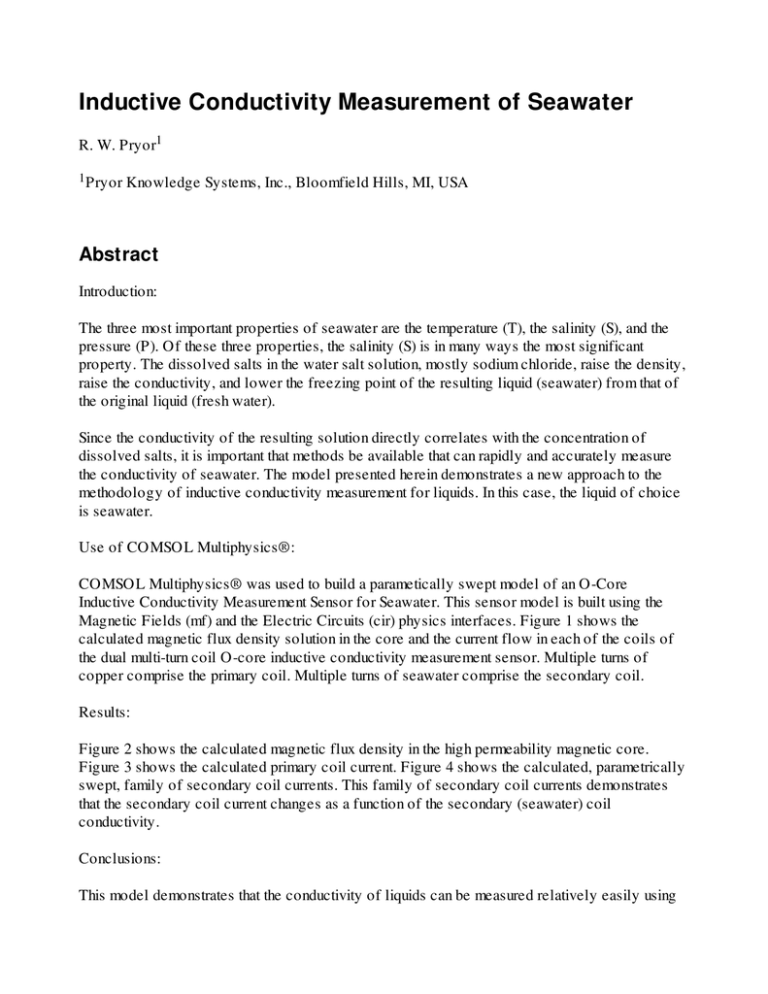Abstract
advertisement

Inductive Conductivity Measurement of Seawater R. W. Pryor1 1 Pryor Knowledge Systems, Inc., Bloomfield Hills, MI, USA Abstract Introduction: The three most important properties of seawater are the temperature (T), the salinity (S), and the pressure (P). Of these three properties, the salinity (S) is in many ways the most significant property. The dissolved salts in the water salt solution, mostly sodium chloride, raise the density, raise the conductivity, and lower the freezing point of the resulting liquid (seawater) from that of the original liquid (fresh water). Since the conductivity of the resulting solution directly correlates with the concentration of dissolved salts, it is important that methods be available that can rapidly and accurately measure the conductivity of seawater. The model presented herein demonstrates a new approach to the methodology of inductive conductivity measurement for liquids. In this case, the liquid of choice is seawater. Use of COMSOL Multiphysics®: COMSOL Multiphysics® was used to build a parametically swept model of an O-Core Inductive Conductivity Measurement Sensor for Seawater. This sensor model is built using the Magnetic Fields (mf) and the Electric Circuits (cir) physics interfaces. Figure 1 shows the calculated magnetic flux density solution in the core and the current flow in each of the coils of the dual multi-turn coil O-core inductive conductivity measurement sensor. Multiple turns of copper comprise the primary coil. Multiple turns of seawater comprise the secondary coil. Results: Figure 2 shows the calculated magnetic flux density in the high permeability magnetic core. Figure 3 shows the calculated primary coil current. Figure 4 shows the calculated, parametrically swept, family of secondary coil currents. This family of secondary coil currents demonstrates that the secondary coil current changes as a function of the secondary (seawater) coil conductivity. Conclusions: This model demonstrates that the conductivity of liquids can be measured relatively easily using an inductive sensor methodology. This approach could also be employed to measure most other liquids or liquid combinations. Figures used in the abstract Figure 1: Calculated Magnetic Flux Density Solution in the Core and the Current Flow in each of the Coils of the Dual Multi-Turn Coil O-Core Inductive Conductivity Measurement Sensor Figure 2: Calculated Magnetic Flux Density in the High Permeability Magnetic Core Figure 3: Calculated Primary Coil Current Figure 4: Calculated, Parametrically Swept, Family of Secondary Coil Currents



